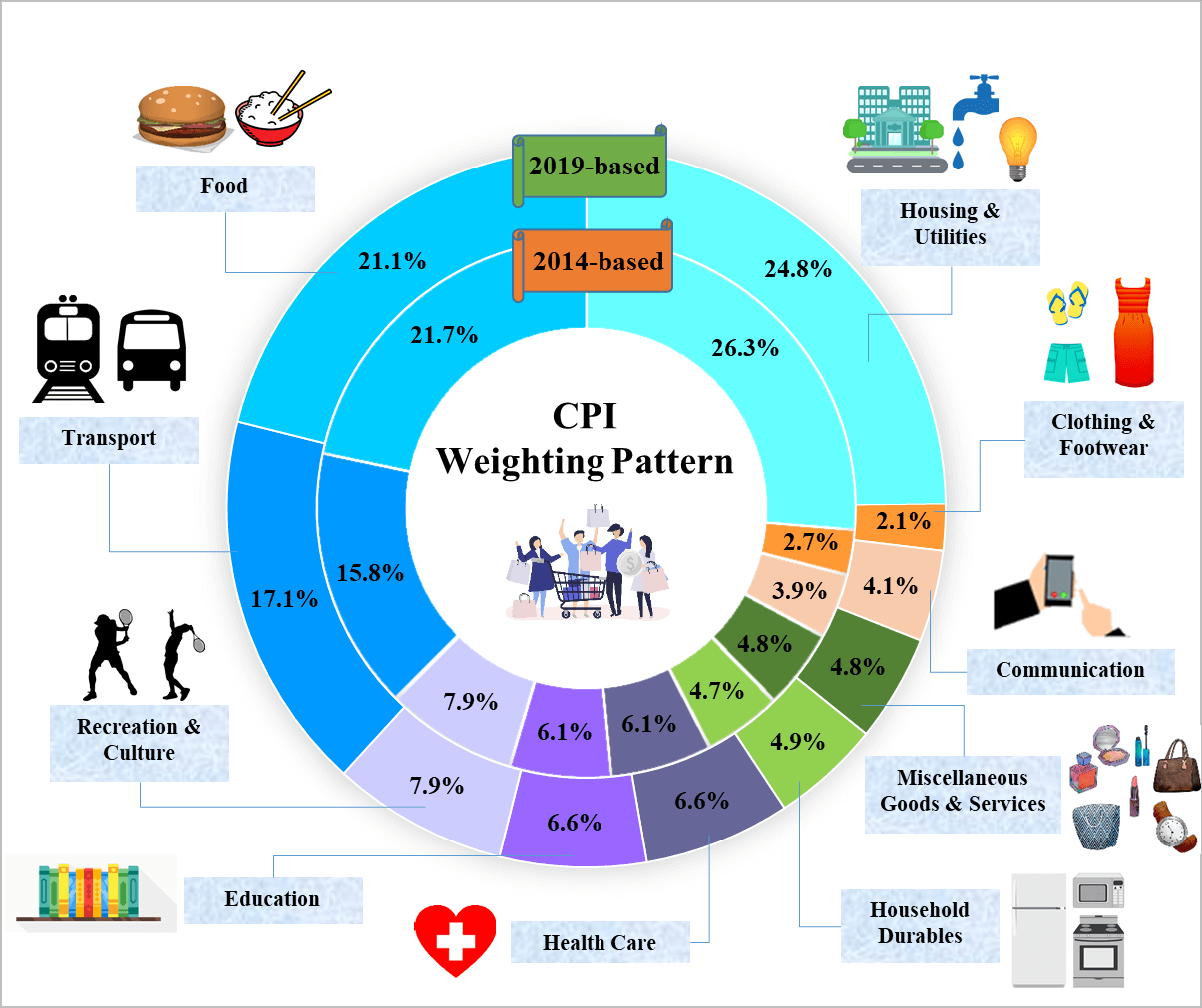What is CPI?
The CPI is designed to measure the average price changes of a fixed basket of consumption goods and services commonly purchased by the resident households over time. It is widely used as a measure of consumer price inflation.
How is the CPI used?
- As a measure of consumer price inflation
- As inputs in the formulation of government economic policies
- As a means of maintaining dollar values in the compilation of economic statistics
How often is the CPI rebased?
The CPI is rebased once every five years to reflect the latest consumption patterns and composition of goods and services consumed by resident households. The latest base year for the CPI is 2019.
What does the CPI basket cover?
- Consumption expenditure incurred by resident households are covered in the CPI
- Includes goods and services commonly purchased by households from a wide range of retailers and service providers
- About 6,800 brands/varieties from 4,200 outlets are selected in the 2019-based CPI
How are the CPI weights derived?
The CPI weights reflect the relative importance of each good or service in the basket. The weighting pattern for the 2019-based CPI was derived from the expenditure values obtained from the Household Expenditure Survey (HES) conducted between October 2017 and September 2018, and updated to 2019 values by taking into account price changes between 2017/18 and 2019.
What is the weighting pattern for 2019-based CPI for general households?

How are CPI prices collected?
- Prices are obtained via postal/email enquiries, electronic returns, webscraping data from relevant websites and administrative data. Prices of perishable food items are collected by field interviewers.
- The frequency of data collection depends on price behaviour of the good or service. Those goods and services with volatile prices (e.g. perishable food items such as seafood, meat and vegetables) are surveyed every week while those with more stable prices such as service & conservancy (S&C) charges for HDB flats, utility tariffs, bus/train fares, school fees, medical services and household durables are priced monthly, quarterly, half-yearly, yearly or as and when the prices/rates change.
Why is my inflation experience different from the CPI?
The CPI reflects the collective experience of inflation for all households. It does not correspond to the inflation experience of any particular household since every household’s spending pattern is unique. Depending on the goods and services purchased by each individual household, changes in prices will impact each household to a different extent. Those who spend more on those items with rapid price increases will feel a greater impact of inflation than others, and vice versa.
When is the CPI released?
The CPI is released on the 23rd of every month, or on the following working day if the 23rd falls on a Saturday, Sunday or a public holiday.
Where can CPI data be obtained?